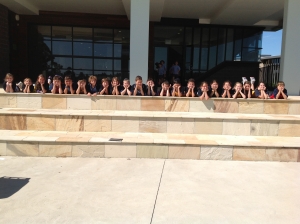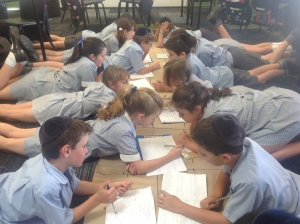Teachers want to and should be heard – how do leaders do this without overloading teachers with priorities to address? On Thursday morning three people on the Report Committee facilitated a report review session. Reporting is a hot topic that generates many opinions and stress for many teachers and leaders. Reports take a lot of time to write for not so much reward some feel. No format is perfect, parents don’t always appreciate the truth, capturing the essence of a learner in writing is not easy are other observations.At our school we have wanted to improve reporting for a long time and have heard great ideas. But it turns out that our options are limited. At our school, we have got much better at collaborating – so why didn’t we collaborate sooner with teachers? Due to the following, we decided not to hold discussions with all staff to gather input in an organised way (we did get input from a few):
- The technical system we use to generate reports limits the changes we can make;
- Our aim is to not make the report writing process even more complicated and time consuming for teachers than it already is;
- We had already put into practice shifting the focus from work to learning and the learner;
- Everything we say/write about a student has to be evidence based not opinion;
- The requirements to use a 5 point A to E scale and include comparative reports are not negotiable.
Furthermore, Term 1 was 8 weeks long and priorities and PD left insufficient time for collaborating about reports. Creating the time and space to give teachers a voice becomes a choice between collaboration and preserving sanity.
With all of the above valid points in mind, we realised as a leadership group, there was not much wriggle room for change and the kinds of changes teachers and leaders were desiring (evidenced from informal discussions with some teachers who feel strongly about reporting), would not be possible to make or would not be practical to implement.
Questions I have been pondering:
- As a leader, does one try one’s best to avoid pushing teachers over the tipping point by looking out for teachers’ workload and well being or do you consult on everything to ensure everyone has a voice?
- Realising only minor changes can be made to reports, should leaders do the best job they can under the circumstances without whole school collaboration?
- Does one consult with a few or all when the timing doesn’t allow further consultation without risking burn out by holding another before school meeting to give teachers a voice, only to tell them their suggestions can’t be taken into consideration?
- Even with attempting to consciously limit priorities, teachers and leaders feel pressured as there is never enough time to do these justice, so do you add to the priorities so that all stakeholders can have a say?
I remember clearly the feeling of frustration at not being consulted on decisions that directly impacted me as a classroom teacher. I also remember at times realizing afterwards that being included although it would have felt fair, was not going to change the outcome in those instances.
Sometimes it’s not feasible to give everyone a voice. Knowing when to and knowing how to, makes all the difference to the outcome.
Additional questions i have been pondering on include: With our reports it turns out that a total of three changes were made to the report format. Only one of these is a completely new addition. Did this make it worth it to hold a discussion with all staff in Term 1? We thought not. Did we do the right thing in not formally including enough teacher voices in our discussion earlier on? Probably not. Should we have added this to the agenda for year level teams to discuss in their meetings when they already had enough to discuss and decide upon? Definitely but when? Is it too late for teachers to have a voice? No.
Following our report review session with teachers, the three facilitators of the Report Review session met and debriefed. We analysed concerns teachers raised and figured out what our next steps could be.
A summary of all the points teachers made was sent to Learning Team Leaders to review and add to in preparation for their weekly meeting with the Director of Teaching and Learning. At the meeting potential issues were debated, team leaders were given a voice and next steps were decided. They felt they should have been consulted sooner. Certain aspects of the report will be taken back to their team. They will then be the voice for their team at the next LTL meeting and be a part of the decision to include or exclude the proposed new addition.
The second biggest issue to come out of the review session was teachers feel that the changes (introduced three years ago but implemented across the school at the end of last year) makes some comments feel generic and that their writers voice has been lost. We have heard you and as a moderator/ editor I make a commitment to you to do my best to preserve your writers’ voice should I suggest any changes to your comments.
One solution we have tried to ensure teachers voices are heard is to collaborate with Learning Team Leaders on what our priorities should be for the term and year ahead. Somehow reports were left off the list of priorities.
We robbed teachers of their voices – this brings me back to my original question: how else could one ensure teachers have a voice when there are already enough priorities on the agenda and PD schedule?


